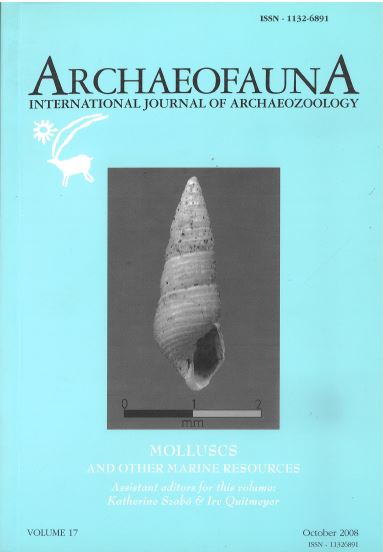Investigations on Archaeological Cerastoderma glaucum Population from Troia (Turkey) and Their Potential for Palaeoeconomical Reconstruction
Keywords:
Troia, Shellfishing, Cerastoderma glaucum, Subsistence economy, Bronze AgeAbstract
The nature of shellfishing in the subsistence economy and the role of shellfish in the diet of Bronze Age Troia are questioned in this paper. A prominent feature of the archaeozoological assemblages of the site are remains of Cerastoderma glaucum. Relative abundance of taxa, mean valve height and estimated age range of C. glaucum populations were used as analytical tools to estimate the relative importance of this resource. Analyses indicate that shellfishing activity was more intense during the Early Bronze Age than in the Late Bronze Age, but shellfish consumed during the Late Bronze Age yielded more flesh per individual. Potentially, the average Late Bronze Age C. glaucum individual contributed more calories and protein to the diet than the average Early Bronze Age C. glaucum. Results from Middle Bronze Age samples are ambiguous. This ambiguity can be related to climatic changes that occurred at the time, but a bigger sample size is needed for a more satisfactory explanation of the patterns observed.

